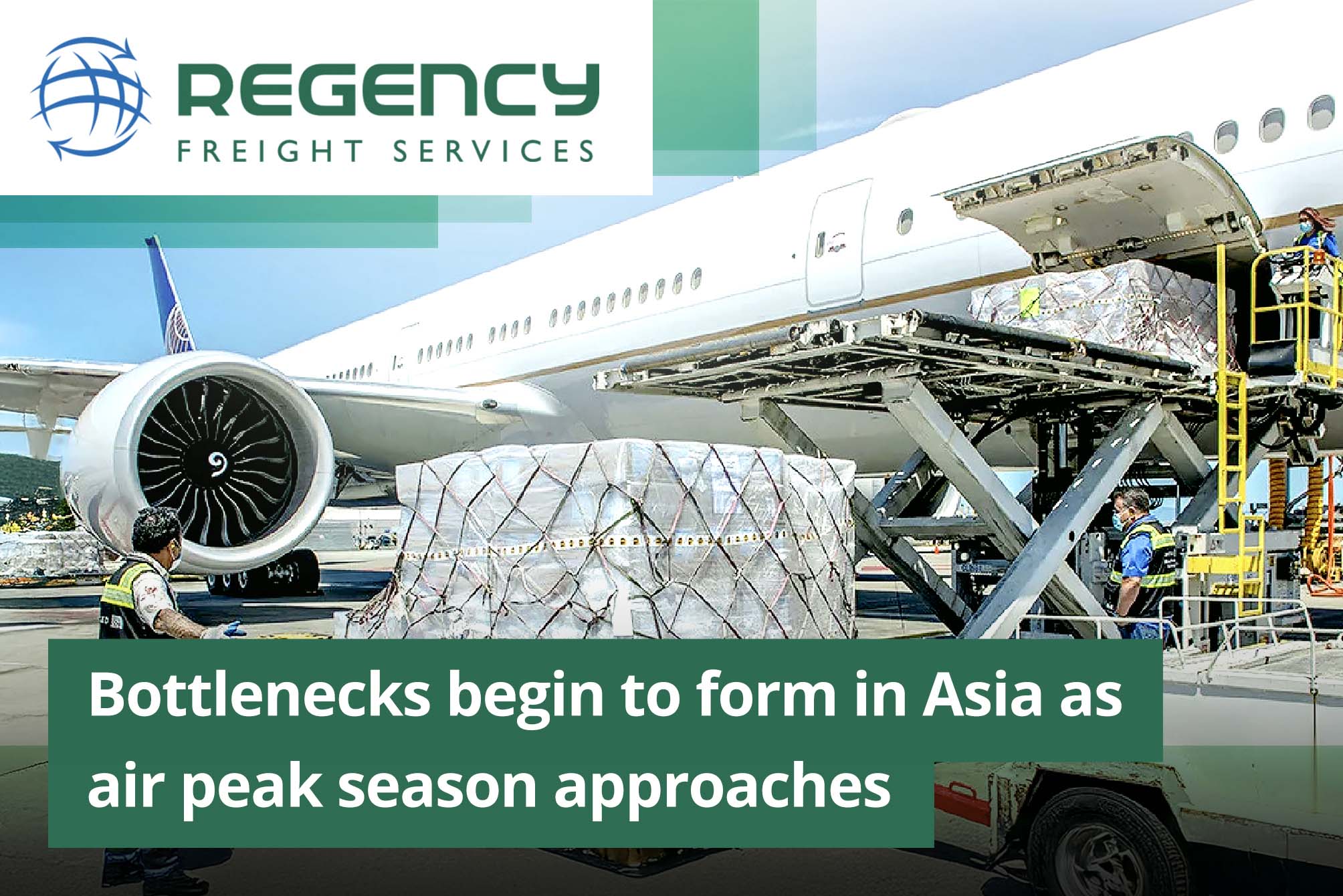Bottlenecks begin to form in Asia as air peak season approaches30 October 2024
On the eve of the peak airfreight season, most Asian gateways are running without problems, but some bottlenecks have begun to appear, particularly out of South-east Asia and the Philippines. And, according to the latest Dimerco Asia Pacific Freight Report, despite sinking volumes, exporters using container lines are also facing challenges as a result of a sharp rise in blank sailings. After an unexpectedly calm September, when ecommerce and electronics underperformed in terms of export volumes, Dimerco Express Group predicts a surge in airfreight traffic, beginning now and building up into mid-October. Capacity will be squeezed further by China’s Golden Week holiday early next month, when many factories close, causing a rush to ship-out goods before the holiday. Intra-Asia routes will feel the most strain, while longhaul capacity could be diverted to meet peak demand, the Hong Kong-based logistics firm advised. With a few exceptions, airfreight capacity to Europe out of most Asia Pacific gateways is tight, meaning exporters need to arrange lift in advance. With backlogs of 1-2 days, Singapore’s Changi Airport stands out as the tightest gateway this cargo. Hong Kong and Taiwan are the only two gateways where airfreight capacity is adequate for demand to the US, but at most others it is already tight. Singapore and Vietnam’s two main gateways are already experiencing congestion, while Dimerco rates the situation in the Philippines as critical, with bookings rejected and alternative routings likely to be needed. It advises shippers to book express products for urgent shipments out of Manila, noting that lift is not only tight out of the Philippines, but also at connecting hubs. This is a challenge for shippers moving cargo out of other origins with less developed connectivity, such as Vietnam. Airfreight shipments out of there are facing delays due to high volumes at connecting hubs. Moreover, the peak rush shifts carriers’ focus heavily onto their longhaul traffic, putting further strain on regional lift. “Intra-Asia capacity will tighten, with longhaul routes prioritised during the peak season,” warned Kathy Liu, Dimerco’s VP global sales and marketing. The same challenge is affecting traffic originating in Thailand and Indonesia, where capacity to Europe and the US is limited. With the exception of northern China, where a high volume of rate queries has not translated into “sufficient” bookings out of Tianjin, capacity out of Chinese airports generally is tight, and set to tighten further. Lift from Korea to Europe and the US is also tight, as exports have steadily increased and are bound to rise further. “Securing space for semiconductor equipment shipments is becoming increasingly challenging at general rates, requiring bookings at least two weeks in advance at updated rates,” advised Dimerco. The end of the peak container shipping season, which was showing signs of winding down already in late July in terms of pricing, has caused box lines to scale-back their capacity deployment. For weeks 38 to 42, 53 more cancellations are hitting the market, Dimerco reported. According to Drewry Shipping, 90 blanked sailings have been announced out of 692 scheduled runs, which translates into a cancellation rate of 13%. Of these, 67% are affecting the transpacific eastbound, 21% routes from Asia to Europe/Mediterranean and 12% the transatlantic. Rates to Europe and eastbound across the Pacific continue to drop, while the largest declines are seen on routes to the US east coast, having sunk 15%-27% from August, Dimerco reported, noting that some ocean carriers have offered special pricing to the US as their vacancy rate hit 50%. Although capacity to the US west coast is full, rates have still decreased, its analysts noted. Ocean capacity is an issue on some intra-Asia sectors. Dimerco has noticed backlogs of 1-2 days out of Taiwan. Vessel capacity is also tight from South-east Asia to the region’s north-east. Congestion at Port Klang has slightly improved, but blanked sailings and port omissions are still causing vessel delays there, it added. By Ian Putzger |
|
   |
